Abstract
Upon initial nitrate exposure, net nitrate uptake rates in roots of a wide variety of plants accelerate within 6 to 8 hours to substantially greater rates. Effects of solution nitrate concentrations and short pulses of nitrate (≤1 hour) upon `nitrate-induced' acceleration of nitrate uptake in maize (Zea mays L.) were determined. Root cultures of dark-grown seedlings, grown without nitrate, were exposed to 250 micromolar nitrate for 0.25 to 1 hour or to various solution nitrate concentrations (10-250 micromolar) for 1 hour before returning them to a nitrate-free solution. Net nitrate uptake rates were assayed at various periods following nitrate exposure and compared to rates of roots grown either in the absence of nitrate (CaSO4-grown) or with continuous nitrate for at least 20 hours. Three hours after initial nitrate exposure, nitrate pulse treatments increased nitrate uptake rates three- to four-fold compared to the rates of CaSO4-grown roots. When cycloheximide (5 micrograms per milliliter) was included during a 1-hour pulse with 250 micromolar nitrate, development of the accelerated nitrate uptake state was delayed. Otherwise, nitrate uptake rates reached maximum values within 6 hours before declining. Maximum rates, however, were significantly less than those of roots exposed continuously for 20, 32, or 44 hours. Pulsing for only 0.25 hour with 250 micromolar nitrate and for 1 hour with 10 micromolar caused acceleration of nitrate uptake, but the rates attained were either less than or not sustained for a duration comparable to those of roots pulsed for 1 hour with 250 micromolar nitrate. These results indicate that substantial development of the nitrate-induced accelerated nitrate uptake state can be achieved by small endogenous accumulations of nitrate, which appear to moderate the activity or level of root nitrate uptake.
Full text
PDF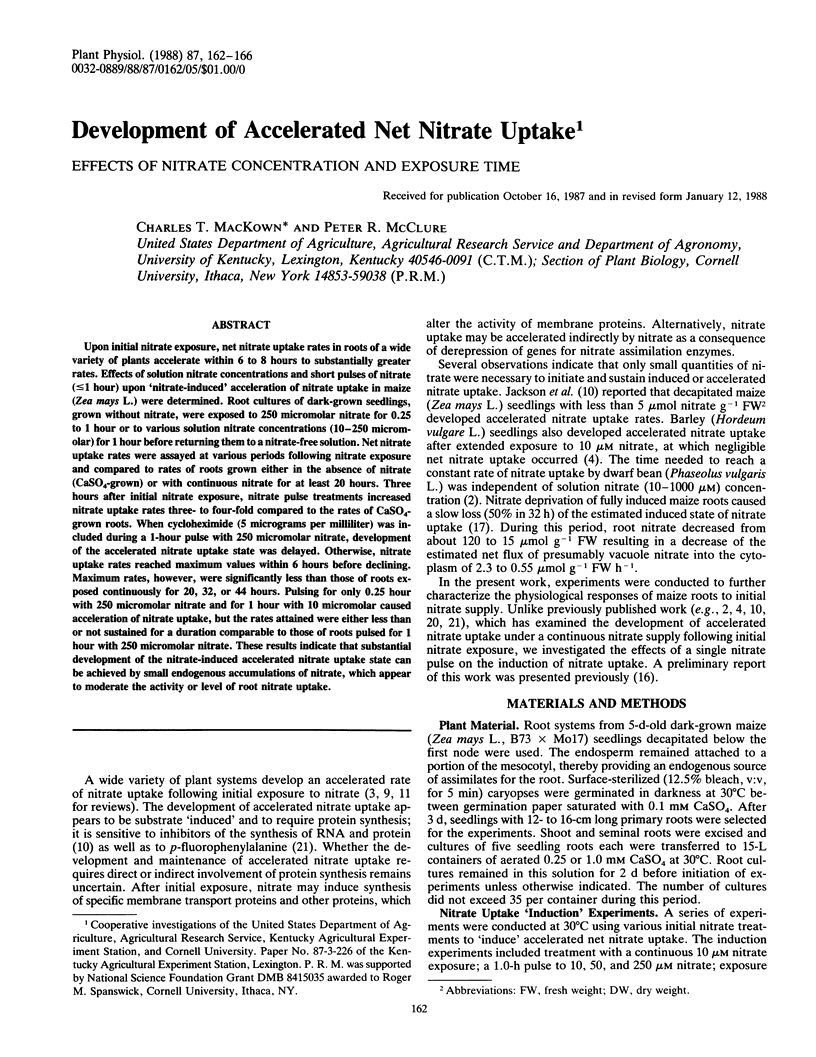
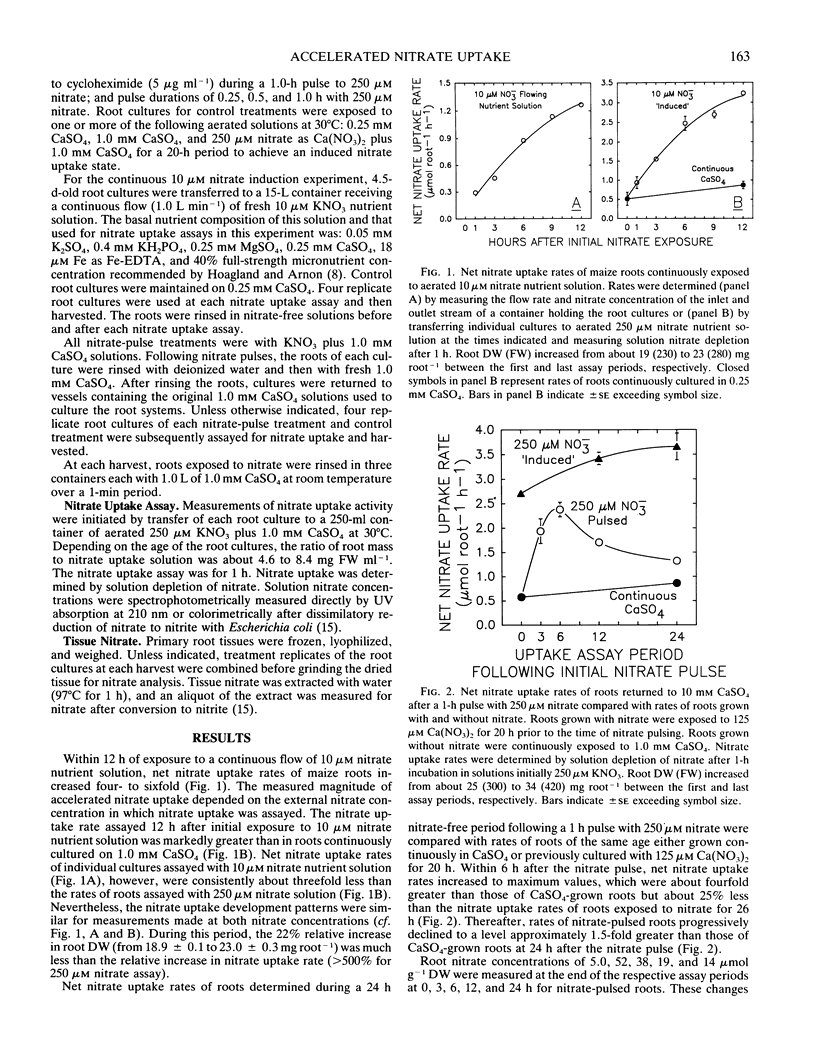
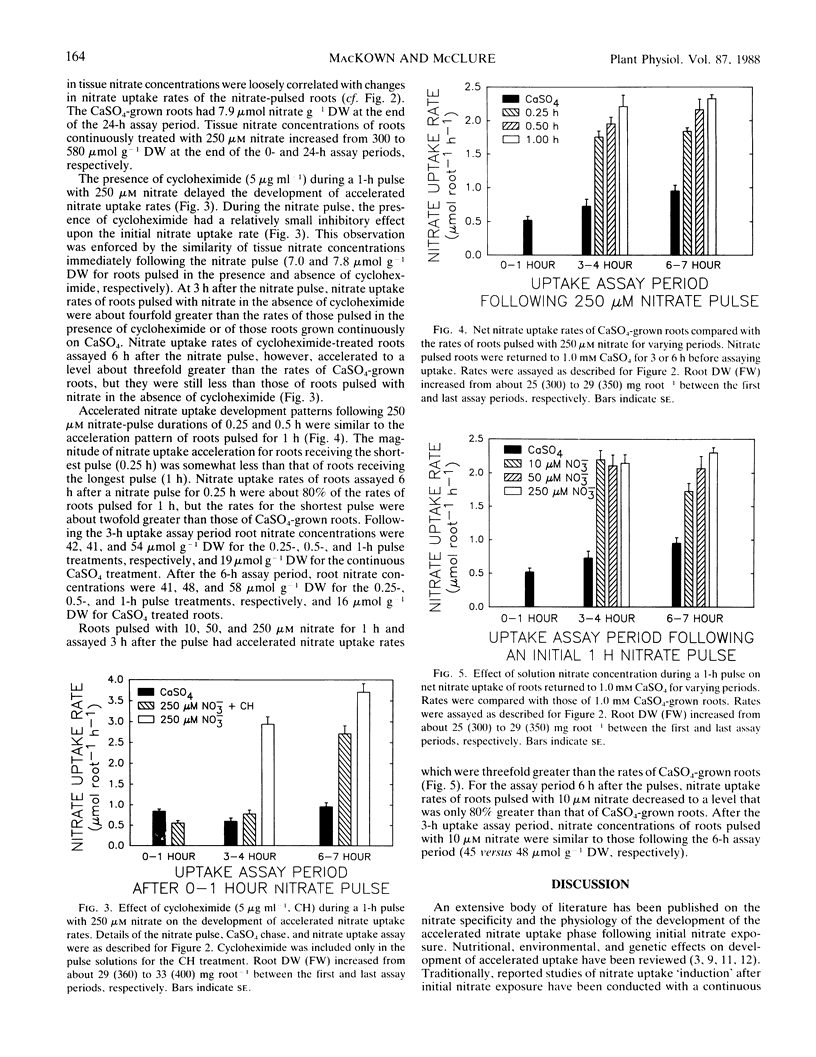
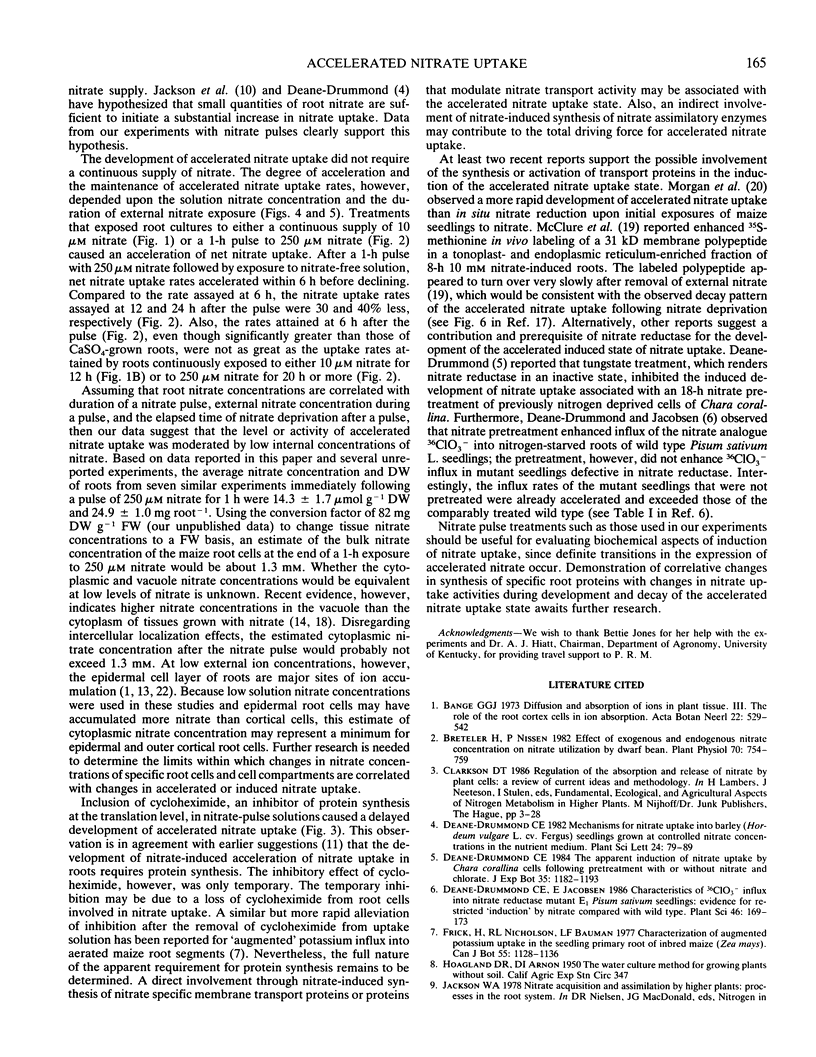
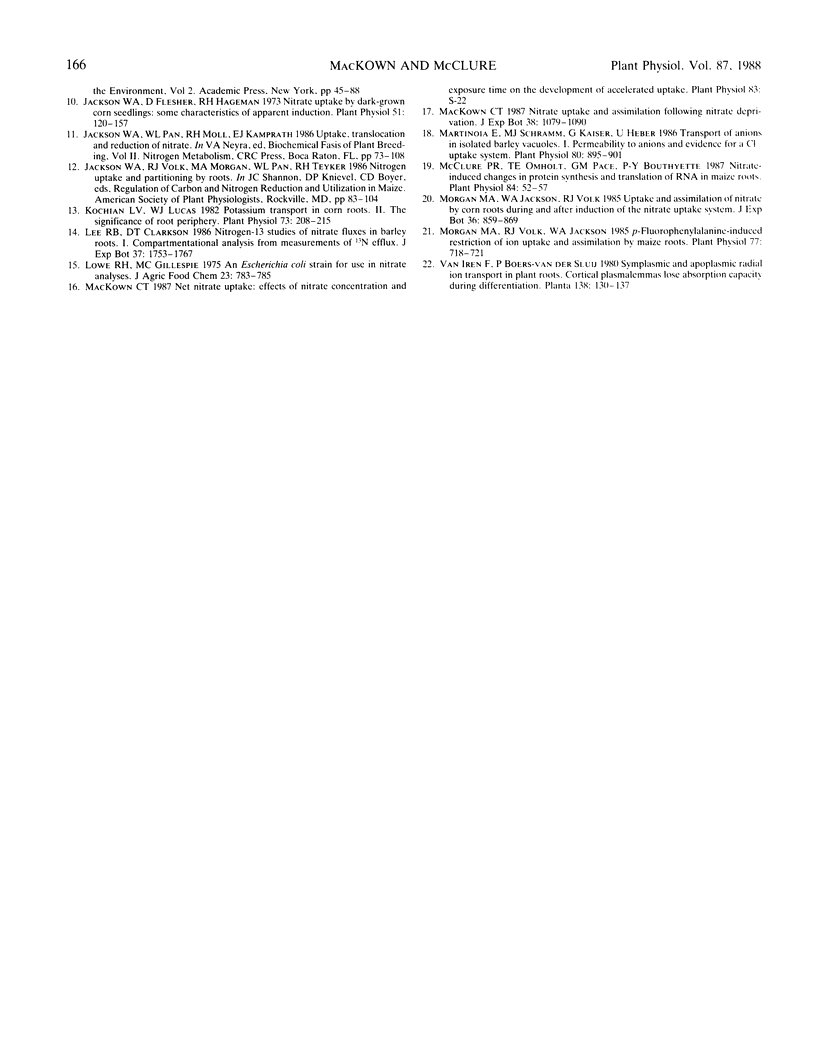
Selected References
These references are in PubMed. This may not be the complete list of references from this article.
- Breteler H., Nissen P. Effect of exogenous and endogenous nitrate concentration on nitrate utilization by dwarf bean. Plant Physiol. 1982 Sep;70(3):754–759. doi: 10.1104/pp.70.3.754. [DOI] [PMC free article] [PubMed] [Google Scholar]
- Jackson W. A., Flesher D., Hageman R. H. Nitrate Uptake by Dark-grown Corn Seedlings: Some Characteristics of Apparent Induction. Plant Physiol. 1973 Jan;51(1):120–127. doi: 10.1104/pp.51.1.120. [DOI] [PMC free article] [PubMed] [Google Scholar]
- Kochian L. V., Lucas W. J. Potassium Transport in Corn Roots : II. The Significance of the Root Periphery. Plant Physiol. 1983 Oct;73(2):208–215. doi: 10.1104/pp.73.2.208. [DOI] [PMC free article] [PubMed] [Google Scholar]
- Lowe R. H., Gillespie M. C. An Escherichia coli strain for use in nitrate analysis. J Agric Food Chem. 1975 Jul-Aug;23(4):783–785. doi: 10.1021/jf60200a018. [DOI] [PubMed] [Google Scholar]
- Martinoia E., Schramm M. J., Kaiser G., Kaiser W. M., Heber U. Transport of anions in isolated barley vacuoles : I. Permeability to anions and evidence for a cl-uptake system. Plant Physiol. 1986 Apr;80(4):895–901. doi: 10.1104/pp.80.4.895. [DOI] [PMC free article] [PubMed] [Google Scholar]
- McClure P. R., Omholt T. E., Pace G. M., Bouthyette P. Y. Nitrate-induced changes in protein synthesis and translation of RNA in maize roots. Plant Physiol. 1987 May;84(1):52–57. doi: 10.1104/pp.84.1.52. [DOI] [PMC free article] [PubMed] [Google Scholar]
- Morgan M. A., Volk R. J., Jackson W. A. p-Fluorophenylalanine-Induced Restriction of Ion Uptake and Assimilation by Maize Roots. Plant Physiol. 1985 Mar;77(3):718–721. doi: 10.1104/pp.77.3.718. [DOI] [PMC free article] [PubMed] [Google Scholar]
- Tomino Y., Sakai H., Woodroffe A. J., Clarkson A. R. Studies on glomerular immune solubilization by complement in patients with IgA nephropathy. Acta Pathol Jpn. 1987 Nov;37(11):1763–1767. doi: 10.1111/j.1440-1827.1987.tb02869.x. [DOI] [PubMed] [Google Scholar]


